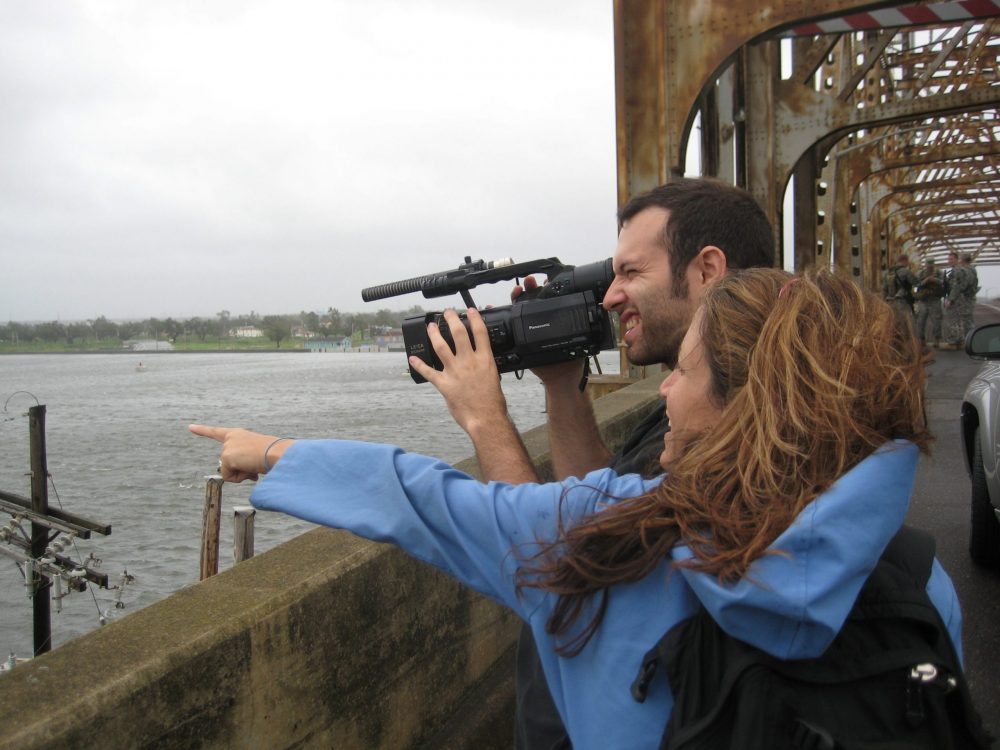Luisa Dantas and Micheal Boedigheimer
When I first came to New Orleans with my video camera in the months after Hurricane Katrina, it was already apparent that, just as the days after the storm laid bare deep and painful truths about race, class, and citizenship in the United States, the story of rebuilding New Orleans would have significance far beyond that time and place.
Over seven years, my team and I amassed an unprecedented archive of hundreds of hours of footage shot in and around New Orleans, encompassing a multitude of stories and perspectives, from homeless encampments to the halls of power. It was our goal early on to use our media to support the work of groups on the ground who were fighting for just and equitable rebuilding. This required assembling and disseminating these stories in ways that extended beyond a linear feature-length film, including online viral videos, a web series, and even art exhibits.
By the time our feature documentary, Land of Opportunity, came out in 2011 (Kalima Rose reviewed it for Shelterforce), the lessons and experiences from post-Katrina New Orleans were increasingly relevant. The Great Recession had begun, as had the BP oil disaster. A year later, Hurricane Sandy hit the eastern seaboard. From Detroit to Gulfport; from New York City to northern Colorado, our communities are increasingly becoming contested sites of post-crisis rebuilding. How we (re)build our communities just might be the defining challenge of the 21st century. The ongoing and multifaceted nature of these stories sparked fundamental questions: How can we draw connections across communities and crises? How can we create media that holds onto lessons from our past, but allows the story to grow and develop as new crises, challenges, and solutions emerge? How can we present a cohesive story, without flattening and homogenizing the particularity of any one place, person, or perspective?
With the help of educators, advocates, mediamakers, and web developers who were as intrigued by these challenges as we were, we embarked on an experiment in interactive storytelling. This week, we launch the results of this experiment: the LandofOpportunity interactive web platform, which merges compelling stories with curated data, research, and calls to action in one collaborative space. Currently in Beta*, the innovative site features an interactive video player and timeline that allow users to explore and compare layered narratives about post-crisis community (re)building in America. Partners can create and curate their own multi-layer stories, and strategically deploy them to engage their audiences, bases, or students in learning and action.
For example, the New Orleans Center for Open Governance used the LandofOpportunity platform to create a layered video about participatory budgeting (PB), a model they hope to bring to New Orleans. While watching a video about New York City’s successful implementation of PB, users may access testimonials from New Orleanians speaking out about issues in their neighborhood that could be addressed if they had greater control of city resources. Users can then access data about the city’s ineffective budgeting process, and how PB might provide solutions.
NHI/Shelterforce has been a key partner in the development of this platform. NHI Executive Director Harold Simon, who joined us at the Bay Area Video Coalition’s Producers Institute, has been instrumental in helping us think through how new technology and multimedia storytelling could be implemented in service of deepening dialogue and engagement around crucial community redevelopment issues. On the platform, you’ll see lots of content from Shelterforce/Rooflines, providing “layers” of context to compelling multimedia stories.
The platform attempts to push beyond issue silos by organizing content within interconnected themes: devastation/rebuilding; displacement/home; exclusion/engagement, community/commodity. Our hope is that the LandofOpportunity interactive platform will encourage users to dig deeper into the core equity and inclusion issues that are happening to cities and towns near us all.
A note on Beta: This platform is a work-in-progress at the cutting-edge of current technology. It currently works best on laptops or tablets with the latest version of popular browsers (Safari, Firefox, Chrome, and Internet Explorer 9 and above), with a high speed internet connection. Moving forward, we hope to get the resources to make this experience more accessible as the technology evolves. If you encounter bugs or glitches, we appreciate your patience and feedback.
(Photos by JoLu Productions Inc.)





Comments